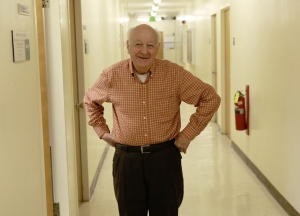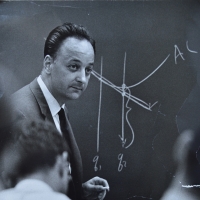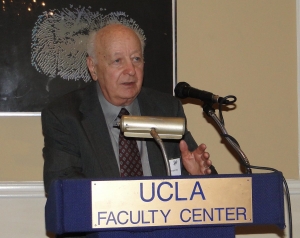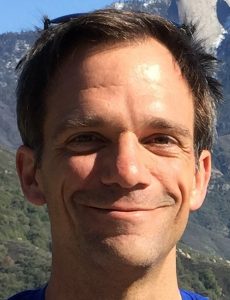This article by Lee Ohanian originally appeared in The Hill.
Last week, 31,000 Los Angeles Unified School District teachers represented by the United Teachers of Los Angeles (UTLA) union went on strike for the first time in 30 years.
Substitute teachers and administrators make up a skeleton crew that is keeping schools open, and about one-third of the 640,000 district students are attending class.
The strike is exacting a tremendous toll on parents, many of whom are poor and who must decide whether to take time off of work to care for their children or send their children to grossly understaffed schools.
The issues underlying the strike highlight the challenges facing public school administration, teacher unions and school funding, and shows what must change if U.S. public schools are to increase student achievement.
The strike is about teacher pay, classroom size and increasing the number of school support staff, including counselors, librarians and nurses. But at a deeper level, the strike is really about suppressing the state’s charter schools, which are the major competition facing traditional schools.
Charter schools, which grew out of interest in having public alternatives to traditional schools, began in 1992 and now enroll over 600,000 students within California. Charters have become increasingly popular, and their number has doubled over the last decade.
Charters now enroll about 10 percent of all schoolchildren in the state but enroll about 20 percent of Los Angeles schoolchildren. The rapid growth of charters reflects parent dissatisfaction with some traditional schools as California school test scores are among the lowest in the country.
The dramatic growth of charters has been strongly opposed by traditional schools and their teacher unions because charter schools take students — and education dollars — away from traditional schools.
Lower student enrollment within LAUSD traditional schools is an important reason why the district does not have the funds to meet the union’s demands.
The structure and management of charter schools differs considerably from that of traditional schools. Charters do not face the same regulations as traditional schools, and 70 percent of charter teachers are not in a union.
The whole premise behind charter schools is that they have greater flexibility in hiring, human resources management and curriculum decisions, which gives them the freedom to develop new ideas and experiment with different teaching practices.
The key question is whether a child’s learning will improve if he or she attends a charter rather than a traditional school. While this is a difficult question to answer, several studies suggest that learning outcomes are significantly higher in charters.
One study of New York charters found that charter education could eliminate much of the achievement gap between schoolchildren in Harlem and schoolchildren in Scarsdale, an affluent New York suburb.
Traditional schools in LAUSD can’t afford to lose any more students to charters. The UTLA is trying to preserve school enrollment — and funding — by attacking charters. During negotiations, UTLA President Alex Caputo-Pearl stated:
“We’re here … to invest in our existing schools. We must do this instead of continuing the unsustainable, destructive practice of unregulated charter school growth,”
If the union gets its way, state legislators, several of whom have received support from teacher union campaign contributions, will severely limit the number of charters, and many parents will have no choice other than to keep their children in traditional schools.
Ironically, the UTLA’s strategy of castigating charters as the villains and asking government for protection from their competitor, is the same strategy that was used by the U.S. auto and steel industries in the 1970s and 1980s.
Those industries were rapidly losing market share to very efficient foreign competitors and sought — and received — protection from imports through voluntary export restraints.
California schoolchildren would be much better off if traditional schools retained students by implementing common-sense reforms rather than by capping the number of charter schools.
These reforms include modifying teacher tenure by increasing the tenure review period beyond its current 18 months of teaching and by making it less costly to dismiss poorly-performing teachers.
Firing a tenured teacher for poor performance can take several years and cost over $250,000 per case. Accordingly, only .0007 percent of California teachers are dismissed for poor performance. Other reforms include replacing seniority-based pay and layoff policies with merit-based pay and layoff policies.
Research by Stanford University economist Eric Hanushek suggests that implementing these reforms would move California schooling outcomes from near the bottom among U.S. state rankings to near the top.
Existing tenure and layoff policy practices are so costly that several Los Angeles schoolchildren filed an equal protection lawsuit against the LAUSD in 2012, arguing that they were being deprived of their right to an education by an effective teacher.
One of the plaintiff’s expert witnesses presented research findings that showed that students lost more than nine months of learning when taught by an ineffective teacher. This is particularly striking when one considers that the school year is only nine months long.
Judge Rolf Treu, who ruled in favor of the schoolchildren, remarked that the evidence presented regarding ineffective teachers was not only compelling, but it “shocks the conscience.” The verdict, however, was overturned by the California Supreme Court on appeal.
The UTLA strike provides policymakers with a unique opportunity to address the underlying issues that are depressing the quality of California schools. It is time to stop protecting California’s largest monopoly and implement reforms that will improve student learning.
Lee E. Ohanian is a professor of economics at UCLA and a senior fellow at the Hoover Institution, Stanford University.





